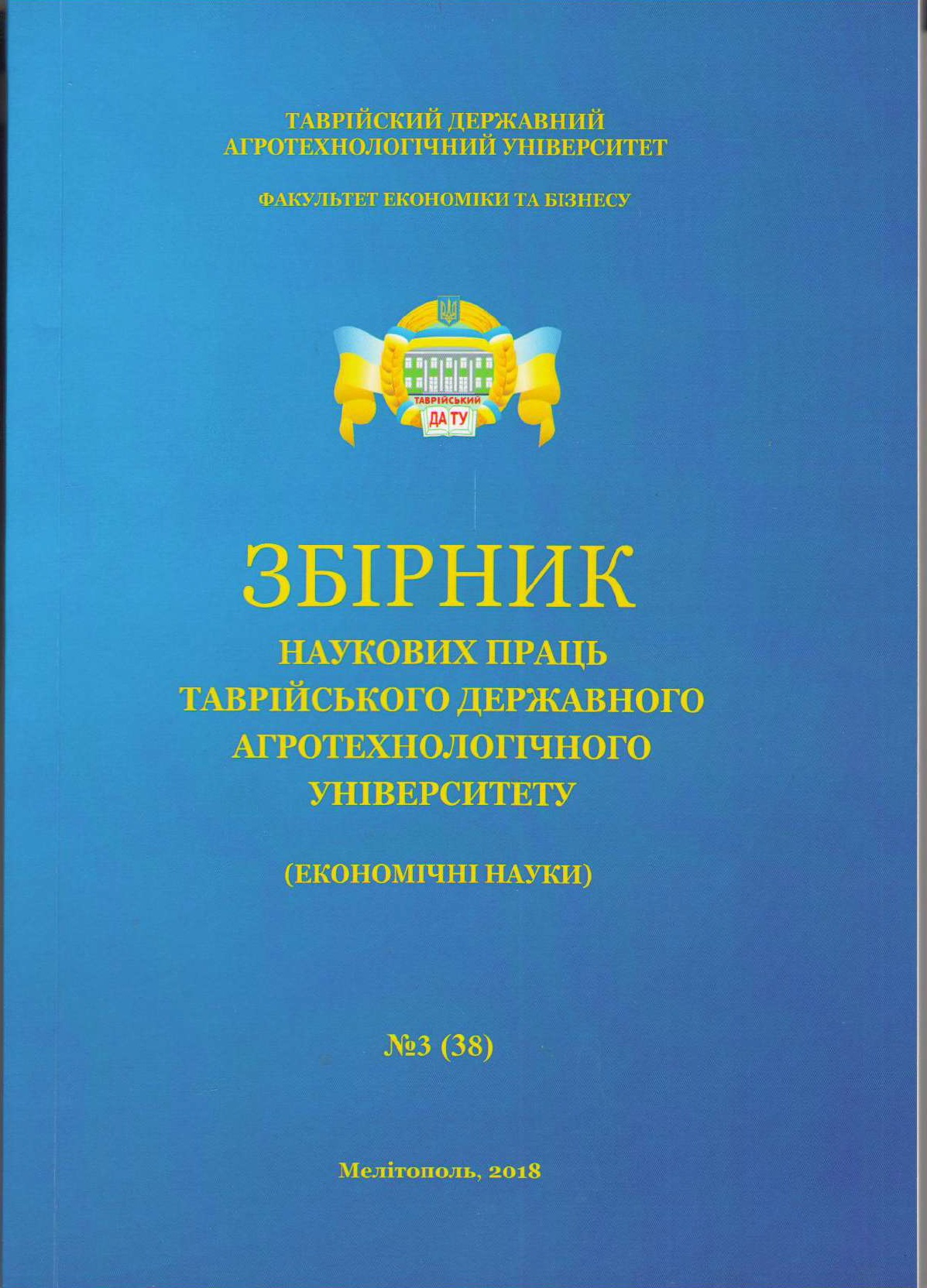СТРАТЕГІЧНИЙ РОЗВИТОК СІЛЬСЬКОГОСПОДАРСЬКИХ ПІДПРИЄМСТВ В УМОВАХ ЄВРОІНТЕГРАЦІЇ
Ключові слова:
конкурентні переваги, стратегія підприємств, сільськогосподарська продукція, внутрішній ринок, рентабельність, частка ринку.
Анотація
Анотація. Автор розглядає стратегічний розвиток підприємств з боку використання конкурентних переваг збуту сільськогосподарської продукції. У роботі використано метод вирівнювання трендів, показники структури та загальні методи економічного аналізу. Виявлено, що за період активізації євроінтеграційного напряму України результати збуту основних видів сільськогосподарської продукції погіршилися. Обґрунтовано основні шляхи стратегічного розвитку вітчизняних підприємств з метою посилення конкурентних позицій на внутрішньому ринку сільськогосподарської продукції.
Посилання
1. Угода про асоціацію між Україною, з однієї сторони, та європейським союзом, європейським співтовариством з атомної енергії і їхніми державами-членами, з іншої сторони : Закон України від 16 верес 2014 р. : Відомості Верховної Ради (ВВР), 2014, № 40, ст.2021.
2. MüllerP, KudrnaZ. ,FalknerG. EU–global interactions: policy export, import, promotion and protection. Journal of European Public Policy. 2014. №21 (8). 1102-1119. 3. Sbragia, A. The EU, the US, and trade policy: competitive interdependence in the management of globalization. Journal of European Public Policy. 2010. №17(3).P.368-382.
4. KuncМ.,BhandariR. Strategic development processes during economic and financial crisis. Management Decision. 2011. №8 (49). P. 1343-1353. 5. Le Gal, P., Dugué, P., Faure, G. and Novak, S. How does research address the design of innovative agricultural production systems at the farm level? A review. Agricultural Systems. 2011. №104(9). P.714-728. 6. Bartolini, F. and Viaggi, D. The common agricultural policy and the determinants of changes in EU farm size. Land Use Policy. 2013. №31, pp.126-135. 7. Levidow, L., Birch, K. and Papaioannou, T. Divergent Paradigms of European Agro-Food Innovation.Science, Technology, & Human Values. 2012.№38(1). P.94-125. 8. Douwe Van Der Ploeg, J. and Roep, D. Multifunctionality and rural development: the actual situation in Europe. [online]. 2003. p.15. Available at: https://www.researchgate.net/publication/258375349.
9. СільськегосподарствоУкраїни за 2017 р. :статистичний збірник / відп. Прокопенко М.О. Київ. Державна служба статистики України. 2018. 245 с.
10. Faostat : Data : веб-сайт. URL: http://www.fao.org/faostat/en/#data
2. MüllerP, KudrnaZ. ,FalknerG. EU–global interactions: policy export, import, promotion and protection. Journal of European Public Policy. 2014. №21 (8). 1102-1119. 3. Sbragia, A. The EU, the US, and trade policy: competitive interdependence in the management of globalization. Journal of European Public Policy. 2010. №17(3).P.368-382.
4. KuncМ.,BhandariR. Strategic development processes during economic and financial crisis. Management Decision. 2011. №8 (49). P. 1343-1353. 5. Le Gal, P., Dugué, P., Faure, G. and Novak, S. How does research address the design of innovative agricultural production systems at the farm level? A review. Agricultural Systems. 2011. №104(9). P.714-728. 6. Bartolini, F. and Viaggi, D. The common agricultural policy and the determinants of changes in EU farm size. Land Use Policy. 2013. №31, pp.126-135. 7. Levidow, L., Birch, K. and Papaioannou, T. Divergent Paradigms of European Agro-Food Innovation.Science, Technology, & Human Values. 2012.№38(1). P.94-125. 8. Douwe Van Der Ploeg, J. and Roep, D. Multifunctionality and rural development: the actual situation in Europe. [online]. 2003. p.15. Available at: https://www.researchgate.net/publication/258375349.
9. СільськегосподарствоУкраїни за 2017 р. :статистичний збірник / відп. Прокопенко М.О. Київ. Державна служба статистики України. 2018. 245 с.
10. Faostat : Data : веб-сайт. URL: http://www.fao.org/faostat/en/#data
Опубліковано
2018-12-17

